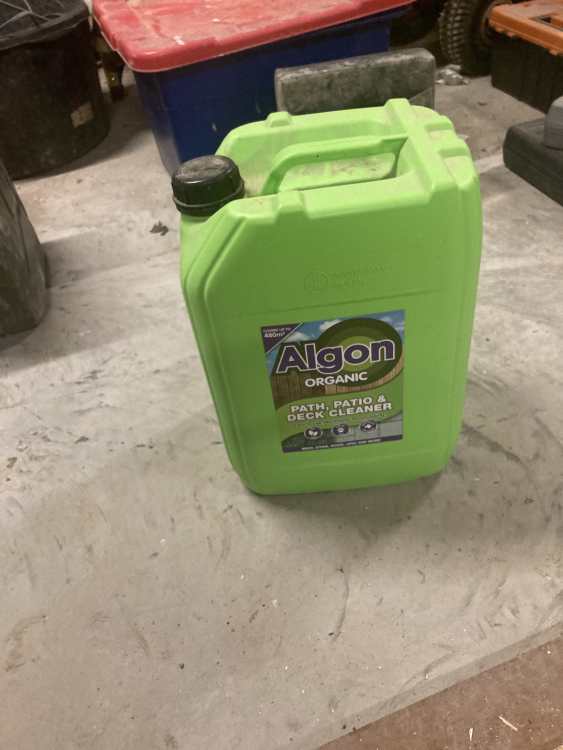Leaderboard
Popular Content
Showing content with the highest reputation on 01/22/25 in all areas
-
Neat job but I agree with Terry. That’s still going to freeze. You would have had to cut it slightly short of the trunking and insulate it to the end of the pipe or, as suggested, continue it into the ground and insulate to ground level. My water pipe comes out of my borehole in free air then down into the ground. I intended backfilling the area around it with earth which would have covered the pipe and stop it from freezing. However to do that required some landscaping so I never got around to it last year. Instead I insulated the pipe as best I could with a very slight bit of pipe left exposed. This worked until we had several days of -5°C and it eventually froze. This year I backfilled with earth as originally planned and it’s been fine so far. I’ve also fitted a heated cable down the ducting which I’ve not had to use yet.2 points
-
This is the real sticking point for us with the installer. I know that the UFH downstairs can output more than enough to heat the first and probably second floors. However, it appears that MCS design looks on a room by room basis and as @JohnMo states, each habitable room must have its own heat source. Even if the likelihood is it will be turned off and heated from below, it doesn't appear a room can 'borrow' the heat output from an adjacent or elsewhere emitter, under MCS Sizing Guidance.2 points
-
would say any of the cement fibre boards eg hardie and others would be suitable. No experience myself so would wait for someone who has trodden this path before to chime in. What's the substrate?1 point
-
This a good idea if you want to guarantee that it doesn't freeze. if you lag down to G/L and use a small soak-away as @Kelvin and I suggest then you probably would only need to turn it on for the few days over winter when there is a sustained hard frost. We don't have this prob since we vent ours internally into the foulwater stack system using a McAlpine In-Line Vertical NRV (these are designed to allow these and similar overflows to be fed back into the FW system). The nearest we have is that we feed all of our potable water through a Harvey water softener. This is great for cooking and brewed drinks, but we prefer taste of the unsoftened mains for drinking as plain or fizzed water. I have a garden tap by the back door that taps directly off the riser before the Harvey, so once every day or so I take a big jug outside to refill all of our glass water bottles that we keep in the fridge from the outside tap. This is a tiny hassle and far less than that of adding an extra unsoftened water tap inside. This outside tap is similarly lagged and does freeze up a few days a year on average. When this happens, I just take a kettle outside and defrost it if our need to refill is getting desperate. Not really workable option for an overflow.1 point
-
1 point
-
I don't know how renowned the MCS HL calc is for accuracy, but if it is 'within tolerance' and the contractors are quoting to provide 21 degrees to Zone 1 (living room(s) and 18 deg to all other spaces at whatever the low-end assumption is for external temp *without FF bedroom heating* then you are probably OK, and have 'provided (for) heating to those rooms'.1 point
-
I spray with diluted bleach from a spray bottle. Best done when you are expecting rain shortly afterwards to wash it off.1 point
-
You won't get condensation on your cold pipes or cisterns, you cannot compare a static caravan to a passive house. Move on to the next problem 😃1 point
-
1. Mist coat everything 2. Paint ceiling 3. Lay flooring 4. Fit skirting and architrave 5. Paint walls, skirting and architrave.1 point
-
Thanks for all the replies. Been a bit busy elsewhere this week. Looks like swapping the RCBOs to C20s is working so soft starts might not be needed. The building and it's normal usage pattern wouldn't be suitable for a heat pump. It's a solid wall uninsulated church hall that gets about 3-4 hours use a week depending on bookings. I'm not a fan of IR heaters but in this case they seem to be a good option. There is also an original fireplace that gets used frequently for the longer sessions. Great to huddle around after poker night. The wiring all looks pretty neat and tidy with modern CU etc. I think the electrician might be giving mates rates so he's good but fits the hall in when he can.1 point
-
These sorts of trickle overflow are often turned down into a small stone chip or fine gravel soak-away at ground level, maybe the size of a plant-pot or bucket. The pipe should be insulated to ground-level. I am not sure where you live in the UK, but the ground very rarely freeze much more than the top few cm where I live in Northants even in the worst cold snaps, so this approach takes the water away without leaving puddling with can freeze and cause a slip hazard.1 point
-
Exactly my thoughts too. Especially on a new build. UFH materials less than £1k, 2 or 3 man days to install full house. Panasonic ASHP £2.5 to 3k, cylinder £1k - then install how you want1 point
-
The actual BUS legislation is here https://www.legislation.gov.uk/uksi/2022/565/contents The requirements include "[the ASHP] is capable of meeting the full space heating and hot water heating demands of that property" Note the wording is 'capable of heating the entire property', there is no requirement that every room shall have an emitter (is anyone going to complain if, for example, you don't bother to heat an under-stairs cloak room). The MCS rules here https://mcscertified.com/wp-content/uploads/2021/12/MIS-3005-D-Heat-Pump-Design-Issue-1.0.pdf require a heat loss calculation to be done and again that the heat pump is capable of heating the whole property. I cant find anything in them that says this means you must have an emitter in every room. Of course most designers wont go to the trouble of working out if the upstairs can be heated from heat drifting from the downstairs, and will thus use the regs as an excuse to sell you stuff you may not need. However so long as it can in fact be heated this way, I cant personally see anything in the regs which prevents you doing it this way. I would encourage you to read these source documents so you are satisfied yourself what they say. They are definitive unlike any 'guidance'. I therefore agree with @johnmo that it is worth talking more with the installer who brings a does of pragmatism. Many installers take the easy route, you perhaps need one that can think outside the box. That said please note that the loss calculation will need to include the upstairs rooms and the downstairs rooms will need additional heating to compensate. This may actually reduce your efficiency (you have less emitter area so need a higher FT) so may turn out not to be a good idea. This all depends on your house and its insulation levels, with a new build and UFH the efficiency loss will likely be negligible, and almost certainly less than if you fit radiators upstairs which force the whole system to be run at a higher FT (both boilers and heat pumps can only run at one FT at any one time).1 point
-
Just ignore the BUS and install what you want, it’ll work out cheaper. Ashp -> diverter -> ufh manifold |—> dhw cylinder Litetally £3ks worth of kit.1 point
-
@JamesP I very much share your sentiments. We're doing a lot less DiY this time and find contractors generally very frustrating. They always seem in too much of a hurry to bother with the finer details. Anyway, lots of DiY after the windows are ffitted! Very frustrating that Internorm make such excellent windows but seem less good for fitting.1 point
-
We’ve added SS tall Rads in the bedrooms and four bathrooms But don’t expect to ever use them We did the same in our previous build and never used the first floor heating in five years The temps seem to track the GH UFH Anyone considering adding UFH to the bedrooms really need to look at the fabric of there build and insulation levels1 point
-
Hello everyone, just a quick intro, we have eventually got our planning (new build) to a point where I can start engaging with contractors to start work (Taken over 5 years dealing with the Lake District Planning Board!) nothing special, the LDPB made sure of that and in the time its taken construction costs have increased significantly ☹️ So be prepared for possible stupid questions, lots has changed since we completed our barn conversion 20 odd years ago. Cheers Mark1 point
-
Several thousand spent on the windows from heaven, and you are concerned about a few hundred on airtight tape : fitted by someone for you - that means £200 a day labour costs. Hmmm. And if the subsequent air test shows a leak where there should (have been) tape, the remedy is a phone call away. Hmmmm. Hmmm. JBDI JustBloodyDoIt1 point
-
And a pub. My SWMBO worked at Headington Hill Hall for a while. (Maxwell's Council gaff)1 point
-
If you remember, I mentioned walking past the house with the shark through the roof. Lol. Just a couple of streets over from that.1 point
-
Ok and which is why BR’s are required as you’re pushing out the thermal envelope.1 point
-
Scrape and clean thoroughly Bleach Leave to dry Then use a cheap oil based undercoat to block staining1 point
-
It's definitely VERY old so it's not cement. It's at least 300 years old according to historical maps and possibly goes back to the 1400s. Our deeds say it was part of an estate and the castle was built in 1604 on top of an existing watch tower from the 1400s. The walls aren't regularly wet - we're in Aberdeenshire which is broadly similar to the SE of england for rainfall. I've been researching what I can but drawn a blank. I do know that the rubble isn't bound with a mortar - it's just mud/soil. The folks at historic scotland said this was common and this type of property last hundreds of years with the original walls.1 point
-
It's described as 1.5 floors but just over 8m high so lots of room upstairs. Lovely big plot so much better house for the location.1 point
-
Yes, if there's enough frame left at the top. Look for 'uPVC window repairs' locally and you'll probably find someone who will do it.1 point
-
PM me if you want details of a great SE, (as they don’t want to be ‘advertised’). Not the cheapest, probably mid/high on costs at a glance, but they did a big complicated project for me and I was glad to hear there were no bolt-on costs for the good few final tweaks / redesigns etc plus they problem solved a bunch of stuff for us too (including coordinating with me for a large pita basement and swimming pool). Im glad you went with an insulated raft as these are night & day better than most other options1 point
-
We have been living in our Danwood for six months now. Our design but adjusted for their construction methods. Very pleased - it's such a change to come home to a warm house where every room is comfortable, well almost. Just had their heating engineers out today to solve a poorly heated bedroom. This had been reported through their online reporting system and engineers were out within the week. They found the thermostat connections to the underfloor valves were mixed up and we were thus adjusting one bedroom and actually setting another. Still they were efficient and pleasant, soon fixed it and all going well. This is something we were pleased about with Danwood, very professional. Be aware though with the foundation requirement. They did spring a need to add our own additional floor insulation on us at the last moment. What they specified in December 2023 did not quite meet regulations which they claimed had recently changed (well actually June 2022 chaps...). We consequently did an insulated raft on medium shrinkage clay but with trees some distance away. No problem with BC - foundations were inspected then we provided photographs. The whole thing was done in 8 weeks. I think BC recognised that this was a factory assembled building made to a high standard. Fully designed out with full superstructure calcs by UK engineers. The construction is a well oiled machine and they didn't skimp as far as I could see (which was every evening after they'd left!). Be prepared for lots of left over timber, we still have a stack under cover for all those small jobs coming up in the garden.1 point
-
The trouble is if you hardwire, you pay the electrician to install wires, you end up paying £50 per thermostat (could be way more or a little less), then you get talked into auto balancing actuators at another £25+ each. So an 8 room house you end up spending several hundred on need less stuff, plus labour to install it... Leave the contractors they will also insist on mixers and pump. I have so much needless stuff I have removed it's unreal.1 point
-
Assume you’ll be removing or replacing the original front door then because if so, it’ll be a single storey front extension. As you’ll be carrying out the works in stages, they have calculated the fees as separate projects. If you were to carry them out at the same time, then they would only need to carry out one set of inspections.1 point
-
Our expanded even more when wet! When in the cavity didn't seem an issue, but if outside it made it impossible to fit between the blocks. Caught the brickies tearing it in half as they got to the top, to save climbing down for more, so ended up daily inspecting to ensure they didn't! As I didn't trust the sods.1 point
-
"earth fault loop impedance" is the technical term for "wire impedance" - e.g. (in very simplified terms) the resistance of the loop of cable from the live on the generator at the power station to the end of the circuit and back through the earth to the generator. This resistance/impedance determines the amount of current that can flow through a dead short from live to earth. The Earth Fault Loop Impedance is therefore one of the factors governing the size of the protective device : as you say it has to be low enough that a dead short will allow enough current to flow that the breaker will trip within the required disconnection time for the type of circuit. Hence as you have correctly understood, the electrician is saying he needs to measure the earth fault loop impedance at the far end of each circuit before he can confirm that it's appropriate to change the overcurrent protective device (as the limit for a 20A breaker is lower than that for a 16A breaker, and indeed the limit for a type C is lower than for a type B). This does sound like it is due to the cold resistance (and therefore inrush current) of the circuit. If there is a single heater per circuit then there's not a lot you can do other than change the type/rating of the protective device or put an inrush limiter in front of the heater. The ratings of the protective devices do not of themselves necessarily equal the maximum demand of the installation. BS7671 does not provide any mandatory method for calculating maximum demand : it is up to the designer to use their expertise to make a reasonable assessment. If you have 6 x 3kW heaters on fixed wiring with no other appliances connected (and no sockets in the circuits) then your maximum demand is 18kW = 78 Amps at UK nominal voltage (between 71-83 amps on a supply within the voltage tolerance range). This is without applying any diversity, which probably wouldn't be appropriate in this situation. Changing the protective devices doesn't in any way change the maximum demand of the heaters. Therefore, it's entirely reasonable to size the protective device for the demand, current carrying capacity and loop impedance of each individual circuit. It is not automatically a problem to have breakers adding up to 120A downstream of an overall 100A breaker. Of course, you may find that if you make each individual breaker big enough to carry the inrush current, you move the problem upstream and end up with the combined inrush now tripping the 100A protective device. This however could be managed by adding control gear to switch one or two heaters slightly on after the others. 2.5mm² T&E is rated for 23A in conduit/trunking on a wall surface, 27A clipped direct to the surface. If the cable is buried / passes through or under insulation at any point, or is bunched with others / at a nonstandard ambient temperature this will reduce those ratings. So from that perspective a 20A RCBO would likely be fine for the current carrying capacity of the cable.1 point
-
Well it is not finished yet but I as Nick said I have noticed that if you put your ear to the wall you can easily hear what's being said outside. But we have faced a number of issues. I really dislike having 9mm osb as the thing everything needs to grip on to. We have 85kg per sqm of brick sips hanging on the outside walls and I do worry if 9mm Osb can take it. Also we are currently working on the inside doing an airtight membrane and the battons over the top which is fine, but the moment you try to screw anything substantial to the wall like CLS the screws just won't grip due to how thin the walls are. Ive also noticed our huge sips roof panels dont seem to perfectly line up. Lastly the main benefit of Sips seems to be the build time but once your factor in the year that it takes to really nail down the sips design, get it manufactured and then to site, it really isn't much faster. I would also never touch ICF after seeing someone down my road build one. Timber frame seems to be the most tried and tested sustainable way forwards in my opinion.1 point
-
I've ordered one of the 50L Heatrae Sadia horizontal water heaters, should be here at the end of the week. Nice that it comes complete with all the bits needed to install it, PRedV, accumulator, tundish, built-in T/PRV etc, although the PRedV is redundant, as I already have a 3 bar one on the supply, plus our well pump cannot exceed about 4.5 bar anyway, given the depth of our well. If anyone wants a 22mm PRedV they are welcome to it, as I already have one spare sat here. Plan is to fix a doubled up bit of 19mm marine ply to the wall above the door, secured with loads of hefty screws into the studs behind the plasterboard. Should be fine to then bolt the bracket to this, as the max weight when full is only a tad over 70kg. Nice thing about this water heater is that it isn't smart, something of a rarity now. Last thing I want for a standby, emergency hot water system, is something that is too damned clever for its own good. Quite why anyone would ever feel the need to have a WiFi connected and controlled hot water heater is beyond me. I just want something simple that will provide some hot water if things go awry. Last thing I need is to be faffing around with an app in order to just have a shower.1 point
-
Well my friend ! You can just see it in one of the earlier photos that the trunking is straight vertically and horizontally but the actual overflow pipe is slightly on an angle vertically ; meaning that final horizontal part of the pipe has a fall ….1 point
-
The other day my wife asked what we’d do for showers if our system stopped working for some reason. I pointed to the newly plumbed in dog bath and electric shower. Has a handy shelf for sitting on and a door and step to get in. 😂1 point
-
Obviously your boiler link will be deleted following ASHP install. I would heat from borrowed house circulation water. Let thermostat open valve only but not call for heat. Or you will end up having a small zone dominating how the heat pump runs, which isn't good.1 point
-
OK a constant flow temp at least means you can see differences in the flow and returns Good You don't want TRV's influencing the flows Ahhh - IMO Not the best time to balance - I know you have all the TRV's open but the rads will have already started to have hotter returns due to warmer room not sucking the heat out of the rads so your delta will be smaller You really want to do it 30 mins after a cold start - enough time to get flows thro all the rads but not enough time that the rooms are warm and are already not pulling the heat from the rads due to a smaller differential between room temp and mean rad temp Good you don't want the TRV's to start messing with the flows With "single panel single convector" T11 rads sized for an 80 deg flow temp it might be conventional wisdom but we really shouldn't be running condensing boilers like that.............. At 55 flow temps best I could get on T11 Rads was 7 to 8 deg On T22 Rads (Double panel double convector) was 12 to 14 Boiler flow temp 55 Boiler Return temp 39 (so overall delta across the boiler was 16 deg) And to do that I had to really slow the flow thro the rads to a point where I needed flow thro the ABV as soon as TRV's started intervening System was much happier with a bit more flow thro the rads lower differences between flow and return on each rad but no ABV until circuit got down to less than 5 rads and very similar delta at the boiler It was at this point I realised trying to achieve conventional wisdom on rad deltas was bloody stupid.....1 point
-
Fully open is fine unless the rooms are at 30 deg C they shouldn't intervene Removed just makes 100% sure they don't interfere1 point
-
You are carrying out a "material change of use" as per Regulation 5 of the Building Regulations, you appear to come within circumstance a) , i.e the building is used as a dwelling where previousy it was not. Regulation 6 sets out the various technical requirements of the Building Regulations that apply to the various types of change of use. Those technical requirements for circumstance a) do not include Part K - Protection from falling. Thus in your situation the minimum guarding heights etc do not apply, the building is as existing. That is not to say that if you feel some of these cill heights are too low that you should not deal with them but just that you will not be obliged to deal with them.1 point
-
I got ours called in by getting a councillor to do it, I called him and explained the situation and he was sympathetic HOWEVER, he voted against me, as did everyone else and would not look me in the eye at the meeting. I was told by an anonymous source everyone was told to vote against my application CORRUPT OR WHAT !!,! Revenge was sweet when at appeal I won on all grounds and the planning department were told they were not abiding by their own policies and threatened with official action (never heard any more though).1 point
-
Despite having fought planners a few times (and won) I have no evidence of corruption but I would call them generally inept, full of self importance and blinkered in their approach. I am sure they are also underfunded which can’t help.1 point
-
We are in the process of going for a Dan-wood house on a plot in our current back garden. Great to read this feedback on the process. We are about to submit our stage-2 technical planning application having got planning in principle approval for a self-build. I was inspired by @kandgmitchell to get in touch with Greenraft today for a raft foundation and they came back straightaway with an outline quote. Would be interested to know about the spec that Dan-wood were happy with (eg is 150mm concrete sufficient). And whether it is worth exploring AACM as a more environmentally-friendly alternative to Portland cement as we won’t need a construction warranty for mortgage purposes.1 point
-
Batteries?? They can't export to the grid so no ENA approval needed. Its the inverter that needs to be ENA compliant1 point
-
Ive been looking at these Fogstar Energy 15.5kWh 48V Battery l Fogstar UK They do some DIY kits too. Maybe something to investigate for when I finish my build...1 point
-
Help BuildHub financially while getting a £50 credit on your energy account! For anyone considering moving to Octopus Energy, please message me for a referral code. Using that code will result in £100 being split between you and Buildhub. When the credit arrives in my Octopus account, I'll transfer £50 to the BuildHub Paypal account and post a confirmation screenshot in this thread (or to you privately, if you prefer) as proof the transfer happened. As you know, BuildHub is a non-commercial forum run entirely by unpaid volunteers. We pay for hosting etc solely through member donations. If this referral scheme is successful, the need for periodic donation drives will significantly be reduced, or perhaps even done away with completely. Thanks for helping to fund the forum! List of referrals: @trialuser @Dobbie @Jenki @Originaltwist @Mattg4321 - Code submitted 3 May 2024, transferred 13 June 2024: @Chanmenie - Code submitted 30 April 2024, transferred 14 August 2024: @SB2023 - Code submitted 5 September 2024, transferred 17 September 2024: @MikeSharp01 - Code submitted 17 September 2024, transferred 18 October 2024: @-rick- - Code submitted 2 October 2024, transferred 20 November 2024: Anonymous - Code sumitted 9 January 2025, transferred 28 January 2025:1 point
-
Sh!t travels downhill, pay day's Thursday are apparently the only two things a plumber needs to know according to my pipe fitter / welder mate. Gets very upset if you call him a plumber. Edit: VERY upset.0 points
-
And if your messy like me, swap number 4 and 5 around! lol0 points
-
0 points








.thumb.jpg.313efca7eb6d8e4b0b7bdb84ead0066e.jpg)




.jpg.c21f3ac78c9b7efd90cbdcb312744dc5.thumb.jpg.7adcad4c0e384f5ecd7d56b0618df6e5.jpg)









